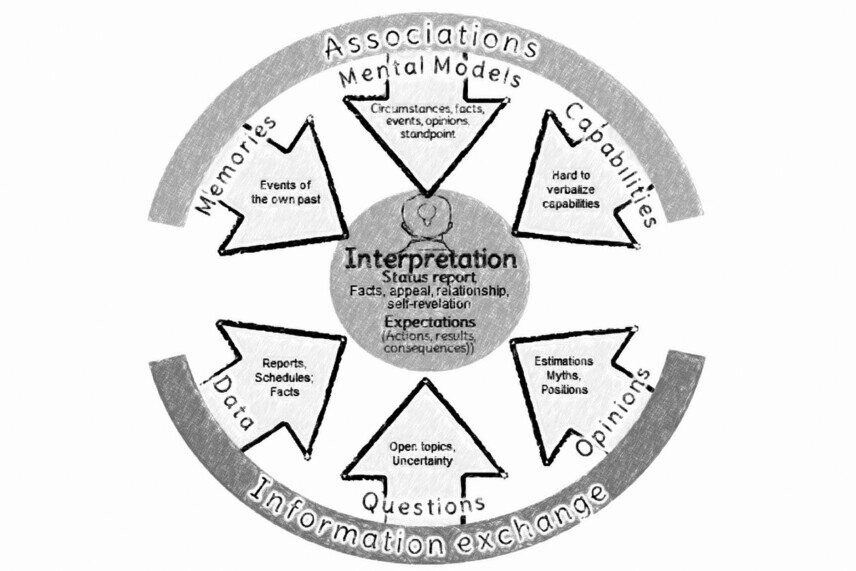Interpretation
The investigation of actual situations is a complex task because a lot of circumstances is hardly tangible. Interpretation provides a structure to determine relevant information for a review of the respective circumstances. Information comes out of knowledge sharing and assumed associations. On this basis, interpretations are developed as a status report and expectations. Measures for the correction of undesired deviations can be derived from these results. The concept creates an understandable basis for the interpretation of complex situations. The resulting clarity comes from the documented interpretations, but above all, from describing data, opinions, answers, mental models, memories, and capabilities.

Interpretation is divided into three areas: Information exchange, Associations, and actual Interpretations.
- Information exchange
generates information, like data, opinions, and questions that result from conversations with the target group or respective anticipated expressions. Data supplies reports, dates, and facts. Opinions are estimates, myths, and positions. Questions result from open points and uncertainties. Information exchange should be developed together with the target group.
- Associations
are composed out of memories, mental models, and capabilities assumed in the mind of the target group. Memories are events from the past, which are remembered by the target group. Mental models are circumstances, facts, events, opinions, and standpoints that compose a consistent world-conception. Capabilities are knowledge and talents that are available.
- Interpretation
consists of a status report and expectations of the target group. Status report happens based on the Four-side communication model that consists of facts, appeal, relationship, and self-revelation. Expectations describe actions, results, and consequences, which are expected by the target group.
Essential for the benefit of interpretation is the written documentation of the findings and the continuous planning and adoption of resulting measures.

